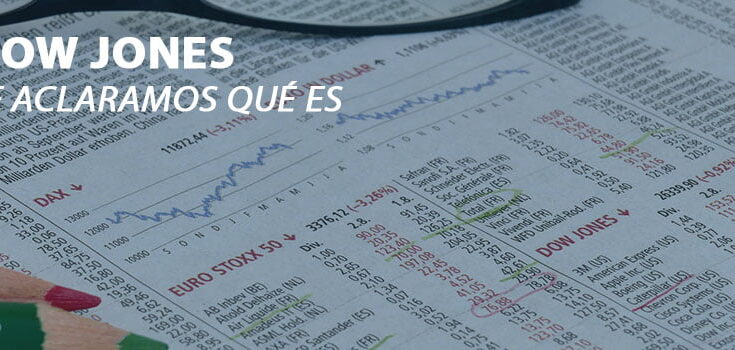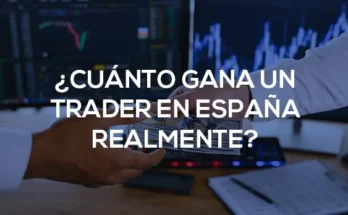The Dow Jones is more than a stock indexit is a true thermometer of the American financial market and, by extension, of much of the global economic sentiment. Furthermore, it is also an asset where you can develop a short-term trading operation.
Understanding what it is, how it is calculated and how to invest in it is essential essential for anyone who wants to get started in the world of investments. If you’re just starting out, this article will serve as a solid and clear starting point.
What exactly is the Dow Jones?
Him Dow Jones industrial average (also known as DJIA or simply “Dow”) is one of the oldest and most well-known stock indexes. It was created in 1896 by two pioneers of financial journalism: Charles Dow and Edward Jones, founders of the emblematic newspaper The Wall Street Journal.
Its usefulness is to show the economic health of the largest industrial companies in the United States. That is to say, measures stock market performance.
To do this, you need the 30 largest and most representative companies on the US stock exchange, although many of them are multinationals that operate globally.
This index has survived wars, crises, bubbles and technological revolutions and remains a key reference for analysts, investors and the media.
How is the Dow Jones calculated?
Unlike other indices such as the S&P 500 or the Nasdaq, The Dow is not calculated by market capitalization, but by stock price.
This means that companies with more expensive shares have a greater influence on the total value of the index, regardless of their actual size on the stock market.
The calculation is done by adding the prices of the 30 securities that compose it and dividing them by a value called the “Dow divisor” (it is simply a number that is used for calculation).
This explains why a company like UnitedHealth can have a greater weight in the index than another large company like Apple: it’s not the size of the company (market capitalization) that matters, but the price at which the shares are trading.
Furthermore, the divisor is adjusted periodically to take into account events (such as capital increases, mergers, changes in the companies that make up the index, etc.).
For exampleLet’s imagine there are only 3 companies in the index:
- Company A: Its stock is trading at $100.
- Company B: Trading at $50
- Company C: Trading at $30
The sum would be: 100 + 50 + 30 = 180.
Suppose the divisor is 0.15, then:
Dow Jones Index = 180 / 0.15 = The Dow would trade at 1,200 points.

Which companies are in the Dow Jones?
As we mentioned, the Dow Jones It is made up of 30 top-tier companiesknown as “blue chips”.
These companies are not selected at random: a review committee chooses them based on its representativeness, stability, trajectory and weight in the US economy.
While we won’t list them all here, it’s worth mentioning the most popular ones:
- Apple (technology)
- Microsoft (software)
- Coca-Cola (consumption)
- Visa (finance)
- McDonald’s (restaurant)
- Walmart (retail)
- Johnson&Johnson (health)
- Goldman Sachs (banking)
The composition of the index changes from time to time. If a company ceases to be representative, merges, etc., it can be replaced by another. This flexibility keeps the Dow fresh.

Why is the Dow Jones important for an investor?
The Dow Jones has great relevance, both in the financial field and in popular culture.
It is followed daily by the media, banks, investment fund managers, traders and governments because provides a snapshot of the mood on Wall Street.
For the individual investor, the Dow is a rsolid efference from the traditional US market. Even though it only includes 30 companies, because they are global leaders in their respective industries, their movements usually reflect the overall economic momentum well.
Now, the Dow does not include many emerging technology companieswhich are usually listed on the Nasdaq market, are represented in the index of this market (Nasdaq 100).
For this reason, many investors use the Dow together with other indices to obtain greater diversification and not be left with a partial view of the market.
How to invest in Dow Jones?
As you can imagine, the index itself cannot be bought or sold directly (since it is just a mathematical calculation). However, there are different ways to operate or position yourself based on its evolution.
The main ones are:
- Buy individual index stocks: You can create a basket of stocks of companies like Apple, Microsoft or Coca-Cola, which are part of the Dow. However, you will need to analyze each company separately and have capital that allows you to diversify across different companies.
- Invest in ETFs that track the Dow Jones: ETFs are investment funds whose shares are bought and sold on the stock market. By purchasing shares, you automatically invest in a basket of 30 stocks that make up the index. It’s a good way to diversify your investment.
- Use financial derivatives (CFDs or futures): Financial futures and CFDs (contracts for difference) allow you to trade the movement of the Dow without physically purchasing the shares. You can win if it goes up or down. Of course they require training and risk management, as they are leveraged products.
Before investing, make sure you understand each instrument well. Previous training is your best ally to avoid mistakesespecially when dealing with complex products such as financial derivatives.
How is it different from the S&P 500 or the Nasdaq?
Although all three are US indices, There are big differences between them:
| Index | Number of companies that compose it | Calculation (weighting) | Main objective |
| Dow Jones | 30 | By stock price | This is a more conservative index, based on established industrial companies. |
| S&P500 | 500 | By market capitalization | It offers a broader view of the market, as it includes major companies from any industry. |
| Nasdaq | 100 | By market capitalization | It shows the behavior of tech companies and startups. |
Do you want to know effective strategies for the Dow Jones?
Understanding what the Dow Jones is and how it works is only the first step. If you are interested in learning how to invest effectively, We recommend that you attend the Basic Online Trading course that you have available at the Trading and Stock Market Academy for Dummies.
With a clear methodology, practical sessions and personalized tutoring, you will learn:
- How to interpret the graphs.
- What does it mean to operate with financial leverage.
- When to enter or exit the market.
- What mistakes to avoid if you are a beginner.
Enter here to access the Basic Online Trading Course.




